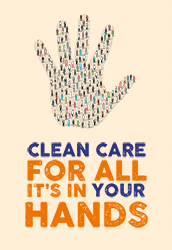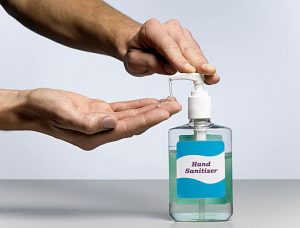The “10 Moments” When Home Healthcare Workers Should Clean Their Hands
 This past Sunday wasn’t just Cinco de Mayo. It was also World Hand Hygiene Day! For anyone in the health care business, washing hands or using hand sanitizer is one of the single most important things you can do to ensure your own health and the health of your patients.
This past Sunday wasn’t just Cinco de Mayo. It was also World Hand Hygiene Day! For anyone in the health care business, washing hands or using hand sanitizer is one of the single most important things you can do to ensure your own health and the health of your patients.
According to the World Health Organization, good hand hygiene can prevent health care-acquired infections caused by microorganisms that can survive for hours on the hands of healthcare providers, if they’re not cleaned properly. At the same time, the Centers for Disease Control notes that some providers practice hand hygiene less than half of the times they should.

“Hand hygiene is a simple and effective way to prevent the transmission of dangerous microorganisms,” says VNSNY Infection Prevention Specialist Victoria Adams. “But despite everything we know about how hand hygiene protects patients’ health, studies show that many providers are still not practicing hand hygiene as often as they should.”
 Unless your hands are visibly soiled, hand sanitizer is the preferred cleaning method, adds Victoria. “It reduces the amount of bacteria more effectively than washing with soap and water and takes less time,” she notes.
Unless your hands are visibly soiled, hand sanitizer is the preferred cleaning method, adds Victoria. “It reduces the amount of bacteria more effectively than washing with soap and water and takes less time,” she notes.
Here are the 10 key moments when home healthcare workers should always wash or sanitize their hands to prevent any transmission of microorganisms between themselves and their patients:
- Before contact with patient environment (upon entering patient’s home).
- Before entering or re-entering your visit bag.
- Before direct patient contact.
- Before preparing medications.
- Before performing procedures with contact or risk of contact with body fluids, excretions, mucous membranes, or non-intact skin (before donning gloves).
- Before moving from a contaminated body site to a clean body site—for example, moving from wound care to tracheostomy care, using gloves.
- Before any computer documentation (to prevent contamination of the computer).
- After contact, or risk of contact, with body fluids, excretions, mucous membranes, or non-intact skin (after removing gloves).
- After direct patient contact.
- After contact with the patient’s surroundings (upon leaving).

